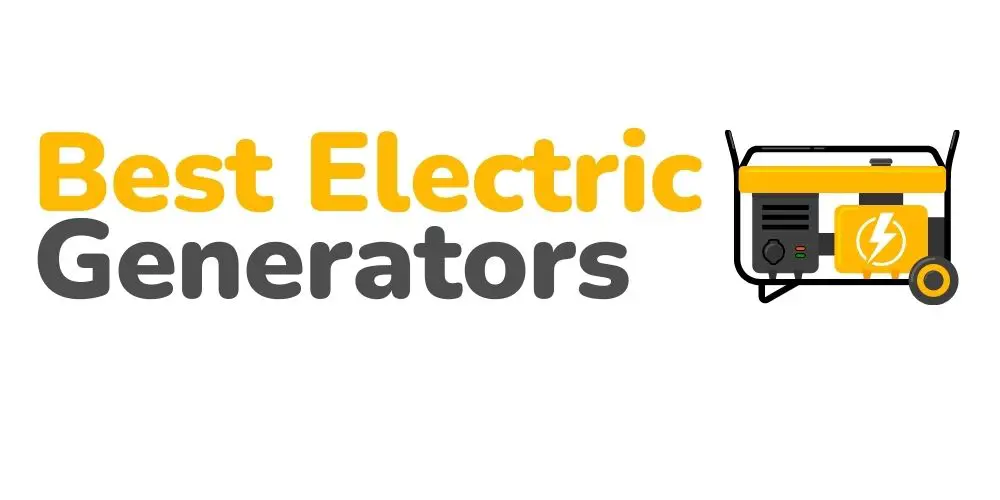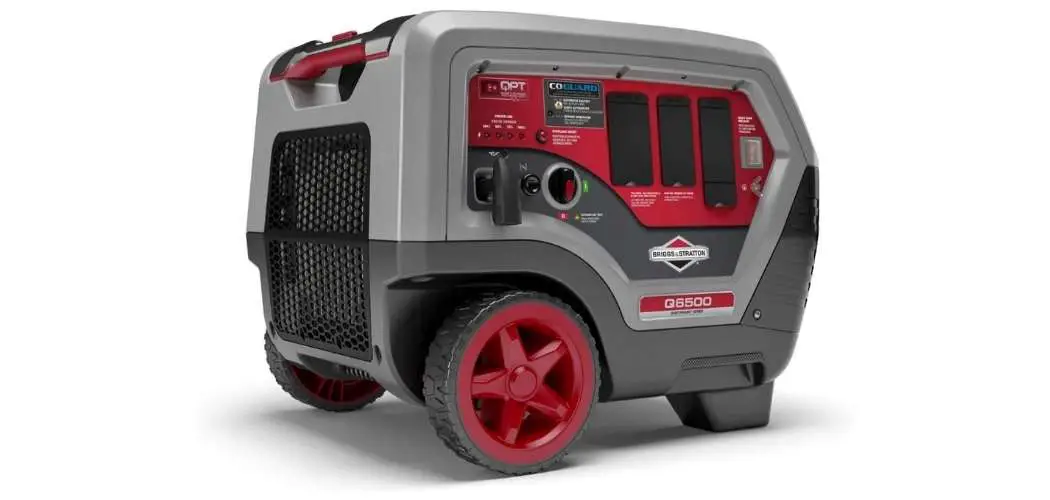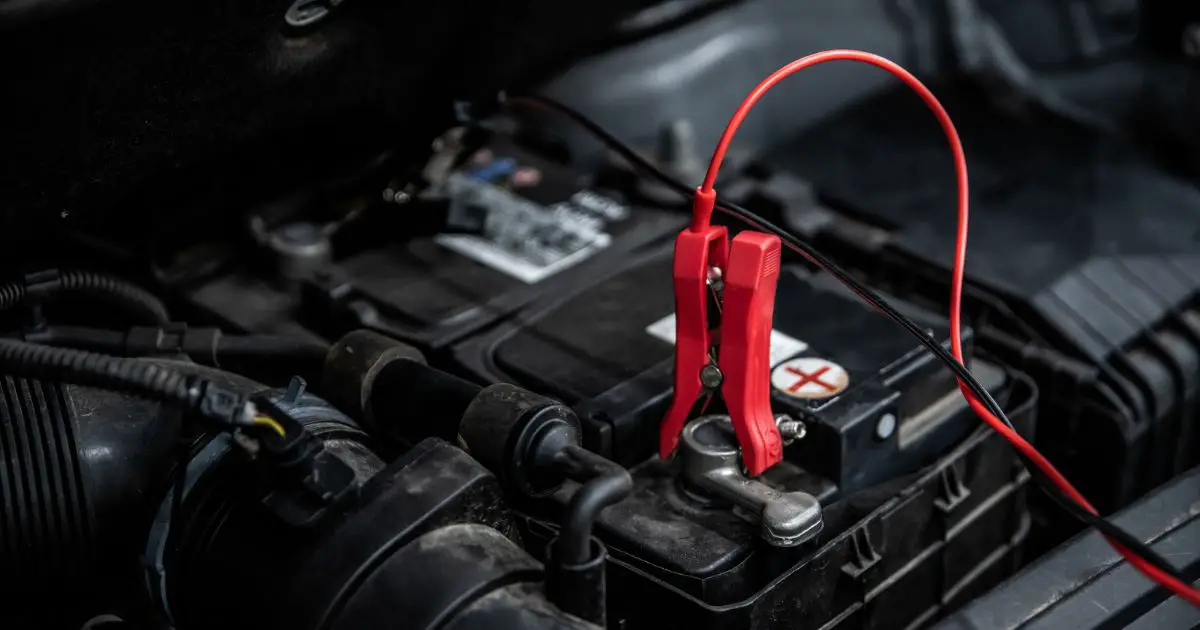An inverter generator is a unit that can invert electricity to provide safer and cleaner power to run sensitive electronic appliances.
The unit is quite compact and energy-efficient compared to a traditional generator. It produces much less noise too, but comes with a higher price tag.
But you might want to understand them better before you buy one. In this guide we will explain how they work and what makes them so special.
Why Is An Inverter Generator Considered Better than a Traditional generator?
Inverter generators provide clean and safe power. Traditional generators cannot produce this type of power, and there is too much fluctuation in their power outputs.
These fluctuations can damage any sensitive electronic device that you might connect with the unit to charge them. This is where these inverter units come into play.
These units produce clean energy with no fluctuations. It means your sensitive electronic device will get fluent power to charge them. Therefore, any chance of electronic damage will be immediately reduced.
Moreover, inverter generators can electronically throttle the engine up or down to meet the demand. Hence, they do not run at full throttle all the time. So, they are pretty effective in energy efficiency.
Due to this energy efficiency, the unit will not consume too much fuel, and you will not have to fill up the tank frequently. These units are much quieter than the traditional generator units, thanks to their compact design. Moreover, these units do not produce many emissions while they are working.
How Do Inverter Generators Work?
Inverter generators convert alternate current to direct current much like the traditional generators. But they do add another conversion to the output. After converting alternate current to direct current, they invert it back to alternate current to produce a cleaner electric current wave.
A traditional unit produces dirty power. Dirty power refers to electricity with voltage spikes. These voltage spikes can harm your sensitive electronic devices, including your smartphones, computers, etc. Dirty power has high THD (total harmonic distortion), which variance the standard 60 Hz frequency.
Therefore, you cannot plug your computer directly into a traditional generator. The power fluctuations from the unit will cause operating eros in your computer and even memory loss.
On the other hand, an inverter unit can produce clean energy by inverting the electrical wave while producing a consistent flow of current without any irregularities that dirty power has.
The THD here is less than 6 percent. Therefore, inverter generators improve the current flow’s overall quality, and you can directly charge your computer or smartphone without any fear of damage.
Inverter Generator vs. Traditional Generator
The primary difference between the two is the inverter’s ability to produce cleaner power than the traditional unit. So, you can directly connect your sensitive electronics like smartphones, tablets, and computers to it. But wait, there is more!
Fuel efficiency
Another significant difference between the two is fuel efficiency. Inverter generators are far more fuel-efficient than traditional units. It is because inverter units can adjust their engine speed and throttle based on energy demand.
For instance, if you only need to power a single lamp, your inverter’s engine will run slower and produce less current. But if you add another lamp, the inverter engine will ramp-up to cater to that additional demand.
But, in the case of traditional generators, this is not the case. It continuously runs at a single speed regardless of the demand. As a result, these traditional units end up consuming more fuel compared to inverter generators.
Output
Inverter generators have a limited range of watts. Most large inverters can produce an output of up to 7000 watts of electricity. This output is significantly less than some traditional portable generators that can produce up to 17,000 watts.
Therefore, the inverters are not ideally suitable for use during emergencies. If you are only looking to power some small items, then, of course, you can use these inverters. Inverters are more commonly used in various recreational applications like picnic, tailgating, camping, etc.
On the other hand, traditional units with their larger output capacity are suitable for emergencies. They can power bigger appliances and even small homes depending upon the output capacity.
Size
Inverter generators are far more compact compared to traditional generators. The internal design of an inverter and its construction is more efficient. Therefore, they can handle smaller fuel tanks. Many inverter generators might weigh less than 40 lbs.
Hence, you can move them around quite conveniently. It is another reason why these inverter generators are so frequently used for outdoor and recreational purposes.
Traditional generators are much bigger because they need more fuel to consume. They come with larger fuel tanks and have larger output capacities. Of course, the size of a unit will depend upon how much power you need based on how many appliances you want to run.
With more applications you want to run on your generator, you will need more output. And it will increase the size of the unit you are looking for.
Noise level
Inverters are designed to make much less noise compared to traditional generators. You will have to look at the noise level ratings of each unit that you are considering. On average, you will find the noise level ratings of traditional generators ranging from 75 dB to 85 dB, depending on the size.
On the other hand, many inverters come with a noise level rating that ranges between 50 dB to 60 dB. Some smaller inverter generators are capable of producing noise lower than 50 dB too. So, inverter units are far quieter than traditional units.
Parallel capacity
We have already established that inverter generators lack power output compared to traditional generators. But with parallel capacity features, they do make up for their power deficiency. You can combine two inverter units using a parallel cable to double up your power.
As a result, you can power up large items, like your RV AC. But the parallel capacity feature is not available on all inverter models. But most models do come with a particular companion unit that you must use for parallel capacity.
How to Choose the Best Inverter Generator?
Before choosing the suitable unit, you have to determine two things;
- What are you going to run with your unit?
- How much power is needed?
If you want to power up a large portion of your home in case of any emergency, an inverter will not be the right choice. You will need a much larger unit, a traditional portable unit, or even a home standby unit.
But, if you only want to power a few essential items, using a large portable or a standby unit will be overkill. For this application, you should go for an inverter unit.The best use case for inverter generators is for recreational activities. But, if you do get involved in frequent tailgating parties, picnics, or camping, you need to have an inverter.
Once you have decided what you will need for your unit for, it is time to determine the wattage. If you want to power more items simultaneously, you should go for a traditional portable unit because it has higher starting wattage. For a few items, an inverter unit should do the trick based on the capacity.
How can I connect an inverter to my house?
You can conveniently connect an inverter unit to your house using an extension cord. Apart from that, you can also use a convenience cord, a manual transfer switch, or a through-the-wall kit. There is no difference between hooking an inverter unit up or hooking a traditional unit to your home.
However, most people prefer not to hook up an inverter unit to their home. It is because the unit is only designed to power up a few items. But in rare cases, people prefer using a transfer switch to connect their invert units to their furnace systems during winters to get some emergency heat.
What items can a 2000W to 3000W inverter run?
A 2000W inverter unit can power a range of different household and recreational appliances. You can power your fridge, TV, toaster, ceiling fan, coffee machine, laptop, small power tools, and vacuum cleaners with a 2000W inverter for household applications.
For recreational applications, you can power your RV AC, camping fridge, coffee machine, barbecue grill, TV, laptop, and toasters.
3000W inverter generators can run all of the items as mentioned above. Plus some additional items like microwave, kettle, and even a small heater. So, there is plenty on offer here.
Can I use an inverter unit indoors?
No, you cannot run inverter generators, or for that matter, any generator, indoors. People think that inverter units are compact and small, and they may be harmless.
But these inverts also have combustion engines in them, and they release exhaust gases that can poison the air in your home and prove to be harmful.
There is absolutely no exception to this rule. You cannot run any generator inside your home or anywhere else. You should not even palace it in a detached garage, open garage, shed, under a deck, or anywhere closer than 15 feet around your house. There is just no acceptable workaround to this matter.
What are the disadvantages of an inverter unit?
The two main disadvantages of inverter generators are their upfront costs and the low output capacity these inverter units come with.
These generators do not come cheap. Inverter units run on advanced technology, and they are pretty compact due to their advanced design. These features put a higher price tag on them compared to traditional units.
Plus, despite having a considerable price tag, they do not have a large output capacity than their traditional counterparts. Outputs of inverter units range from mid to low a thousand watts in most cases.
Is an inverter unit worth it?
Inverter generators are convenient. They ensure fuel efficiency and power your sensitive electronic devices in case of an outage. Higher upfront costs of these inverter units cover much ground in quiet operation, portability, and fuel savings.
If you have to deal with frequent power outages and want to power more items or your home, go for traditional portable or standby generators. But if you want power in your outdoor activities, trips, and any minor power outages, an inverter unit is a better choice.
Conclusion
Inverter generators come with a lower output capacity and a higher price compared to traditional generators.
But, they can produce much cleaner energy. You can use them to power sensitive electronics that you cannot run with traditional units.
Inverters are more compact, and they also do not produce much noise. Besides all that, inverters are much more fuel-efficient compared to their traditional counterparts.



